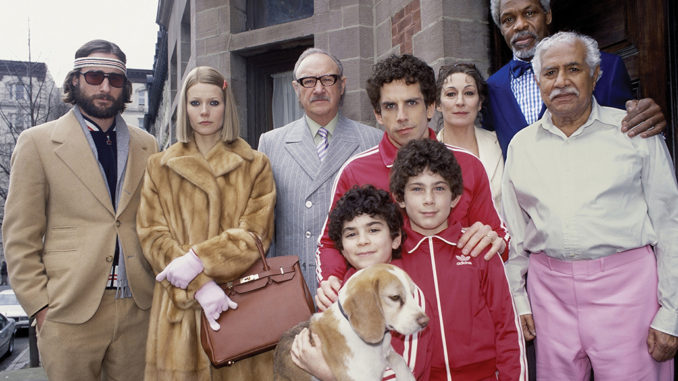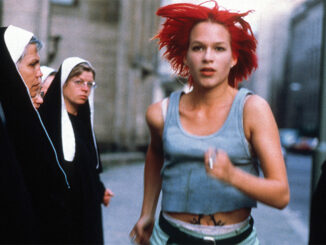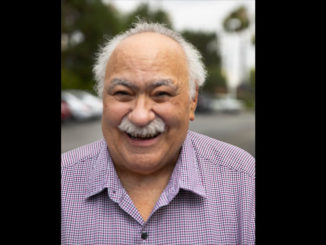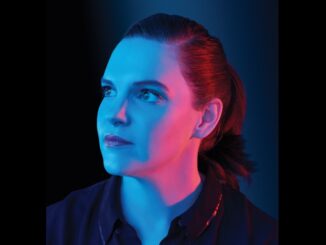
by Kevin Ryan
When I was 20 years old, and my father told me that there was a movie he wanted to take me to, my eyes instinctively gave that signature condescending roll. I immediately began to conjure up excuses why I would be busy––until his desire to take me away from my friends, and bore me for two hours, was extinguished. Back in 2001, I hadn’t shared many movies in common with my dad, so I knew my chances of enjoying it were slim, especially given the strange title of The Royal Tenenbaums.
In the end, I gave way to the pressure and went with him to the movie. The result was a backward realization of a new appreciation for film that would help contribute to a career, to a hobby and, sometimes, to an obsession. Through the contemporary celluloid of Tenenbaums I realized, so much more thoroughly, what makes a film a “classic.”
The Royal Tenenbaums is a dark and redemptive tragicomedy of a “family of geniuses” and their selfish patriarch, Royal (Gene Hackman), who tries to win them back, after years of abandonment. It was directed by Wes Anderson and co-written by Anderson and Owen Wilson, the third collaboration of the duo. Tenenbaums stars an impressive ensemble cast including Anjelica Huston, as Etheline, the mom and separated wife of Royal; Luke Wilson, as Richie, their tennis champion son; Ben Stiller, as Chas, the business prodigy son; Gwyneth Paltrow, as Margo, the playwright daughter; Bill Murray, as Margo’s husband, Raleigh St. Clair; Owen Wilson, as Eli Cash, the neighbor; and Danny Glover as Etheline’s love interest, Henry Sherman.
Although I enjoyed the story, it was the style of the film that changed the way I looked at movies. The visuals blew me away! It was so simple, so minimalist–– yet dynamic, creative and packed with detail. I had never before noticed a movie that balanced these contrasting characteristics. Anderson’s signature quirkiness spoke to me in the movie’s music, production design, cinematography and, of course, its editing.
The real feat that these scenes overcome is the fact that they play smoothly in relation to the rest of the film. In a movie full of so much quirkiness, ridiculous dialogue and whimsical sets, to be able to include scenes of so much gravity and feeling is difficult to pull off.
The way Tenenbaums is edited by Dylan Tichenor, ACE, generally has a minimalist feel, but then, you will be suddenly held in awe by a scene that will showcase an editorial device. When Margo gets off the bus and meets her stepbrother Richie after many years apart, she exits in silent slow motion, until the sweet sounds of Nico singing Jackson Browne’s “These Days” interrupts the silence, and Margo continues in slo-mo as she approaches Richie. That one-minute clip was so magical, I know many people who can’t listen to “These Days” without bringing up that scene.
In another scene, we are transported to a much darker place through the combination of music and editing. Richie prepares himself to attempt suicide as Elliot Smith’s “Needle in the Hay” sets the scene. As Richie shaves off his beard, the scene is expressed through jump cuts, instilling in the viewer feelings of immediacy and desperation. Then we see flash frames of flashbacks implicitly going through his mind. Richie slides to the ground, and suddenly the music and all audio goes silent as Raleigh’s neurological test subject, Dudley (Stephan Lea Sheppard), discovers Richie’s body lying on the bathroom floor.
The real feat that these scenes overcome is the fact that they play smoothly in relation to the rest of the film. In a movie full of so much quirkiness, ridiculous dialogue and whimsical sets, to be able to include scenes of so much gravity and feeling is difficult to pull off. But Anderson succeeds so well that, by the end of the film, when Chas rides with Royal in the ambulance after the latter’s heart attack, we are moved to tears.
I had seen older classics, as well as some films considered as contemporary classics, but it wasn’t until Tenenbaums that I started to understand exactly why they were regarded so. This film opened my eyes to the whys and the hows of filmmaking. It didn’t open me up in just a passive way, but more importantly made me curious to learn more and more––to watch and re-watch more films, both new and old, and to read about film history, theory and criticism.
My father and I have always shared the personality traits of extreme quirkiness mixed with high seriousness, so looking back, I can clearly see why he wanted me to see The Royal Tenenbaums. It’s interesting to think how this love affair with movies began and it’s fun to have had my dad be the one to introduce me to the film that would ultimately change the way I look at movies and influence me to get into the business. Now, despite our disagreements on films, it’s great to share one that has always been on the top of our respective lists.




